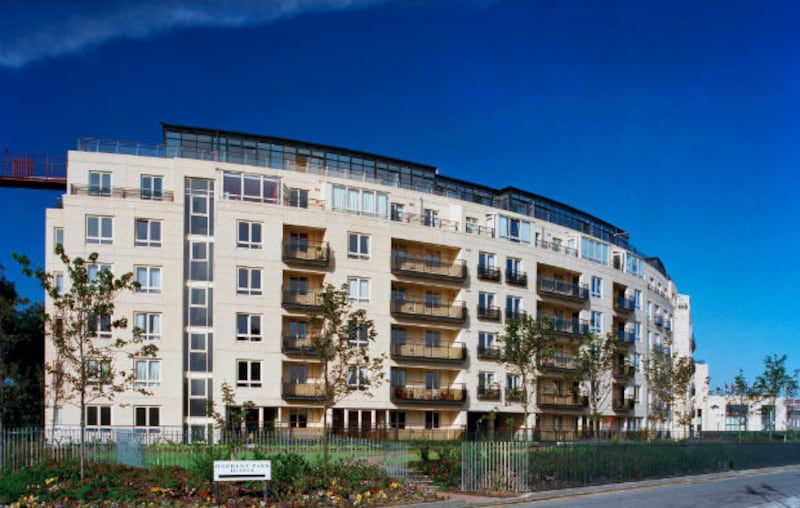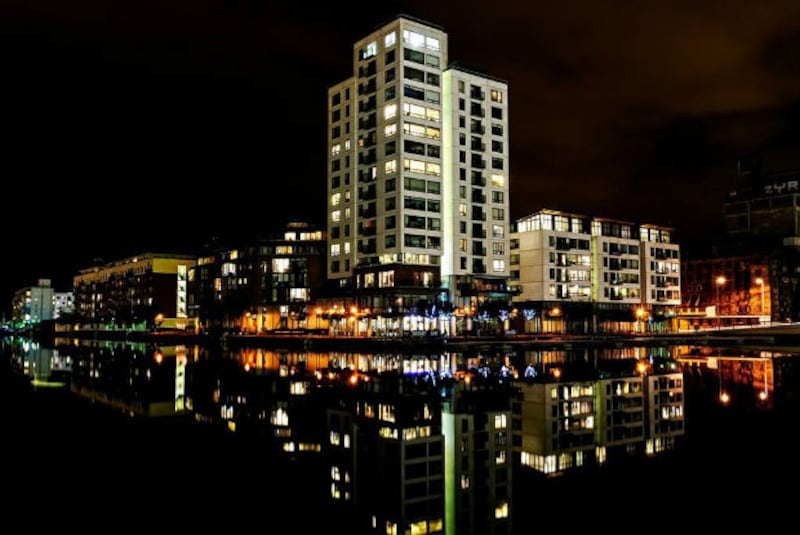The million extra people who are due to move to Dublin in the next 50 years should all be accommodated within the city's existing circumference, says James Pike of OMP Architects, who was awarded the RIAI (Royal Institute of the Architects of Ireland) Gandon Medal for Lifetime Achievement this week.
Such an increase in density “doesn’t mean very high buildings,” says Pike. “A number of developments around Dublin have 40-50 homes to the acre, with three or four storeys, and you could do that on a big scale. The standard in Dublin is eight homes to the acre or less.”
And even if Dublin expanded within its existing boundaries, it would still have a lower density than Barcelona does now (the Spanish city already has a policy of growing within its limits), he says.
Pike has maintained an interest in housing and urban planning since moving to Ireland in 1964, after studying architecture at Regent Street Polytechnic in London (now University of Westminster). With exquisite timing, he arrived a year after Ireland's first Planning Act came in, in 1963. "It was a free-for-all before that," he says. "People could build anything anywhere."
His thesis had covered masterplanning and he has used this throughout his six decades in architecture. Having witnessed the evolution of urban planning in Ireland – over a career that began with creating masterplans for Howth and Westport, system-building social housing in the 1960s, through a new trend for apartments for empty-nesters in the 1970s and the boom in apartment building from the 1990s – he has a keen appreciation of housing issues.

“Urban planning has developed hugely but has also become more and more controlled, with various further Acts, and is a very slow process,” says Pike, although there have been successes and he is impressed at the speed at which the Dublin Docklands was developed from its nascence in the 1980s. “The slow progress in regenerating local-authority housing is a massive problem,” he says , citing Dublin’s north-inner city as one area where things are not moving fast enough. While south of the Liffey “there is quite a lot of work and regeneration, on the north side that’s been a big problem. There is little good-quality development.” An increased use of housing associations would help raise the number of homes through the city, he says.
In his pursuit of a higher density, he questions the idea of refurbishing social-housing schemes. “You end up with fewer apartments whereas if you rebuild you get more development on the sites,” say Pike, bemoaning, once again, the “terribly slow” progress in redeveloping schemes such as Dolphin House and St Teresa’s Gardens in Dolphin’s Barn, two of the biggest local-authority flat complexes in the State.
He has been heartened by the policy for developments with a mix of social and private housing, saying that problems with schemes such as Ballymun lay in the lack of social mix. “A lot of them became serious ghettoes. Ballymun was a very large scheme, 20,000 [people], with no balance or mix, and they never really provided facilities for them.
“The building of relatively large social-housing projects only ceased in the 1980s. Proper integration of social and private housing did not commence until the 2000 Planning Act,” says Pike, whose practice was involved in the regeneration of Ballymun.
His practice OMP has built an astonishing amount of housing around the country but especially in Dublin, from Mount St Anne’s in Milltown and the Millennium Tower at Charlotte Quay through Addison Park in Glasnevin, Carrickmines Wood and Thornwood in Stillorgan, to the Gasworks on Barrow Street and apartments at Hanover Quay in Dublin’s Docklands, which showed how private and public housing could be successfully integrated. In 2009, the project won an RIAI Silver Housing Medal, awarded every three years.

With the growth in apartments in the 1990s came a wider acceptance of new architecture styles, says Pike. “There was a very conservative attitude to house design but apartments were new so people were more open to modern architecture,” he says.
And we should keep the emphasis on apartments in the capital, he says. “When the recovery came the market was still very conservative: still building houses,” he says. “We don’t need any more in Dublin, we should be building apartments: 70 per cent of households comprise one, two or three people. There are lots of singles sharing houses. We need to get them into good apartments and free up houses for families.”
Pike has contributed to the development of housing strategy and urban planning throughout his career. “It is important, apart from doing the architecture, to make a contribution to how society develops,” he says. “It is not just about the dwelling, it is about the whole community.”
In 1969, he and his then partner Eoin McVeigh, who formed the practice Delany McVeigh and Pike with Paddy Delany in 1964, joined in policy discussions with the Department of Local Government and attended the first housing conference hosted by the department and RIAI. Pike chaired the conference in 1974 and the following year, as chair of the RIAI's Public Affairs Committee, he published Dublin, A City in Crisis, with chapters by various architects and planners. He was involved with the 1998 conference The Housing Crisis – Is Higher Density a Solution?, was president of the RIAI in 2006-20077 and a founding member of the RIAI's task force on housing and the Urban Design Forum.
Policies discussed included plans to regenerate city centres involving restoring historic buildings, redesigning streets and spaces, increasing pedestrianisation and making car parking more discreet, something he still advocates.

“We are trying to achieve a massive reversal of the motor car, which is beginning to happen with a better public-transport system. At the moment, the suburbs are far too sprawly and people end up having to use the car. If we can get a reasonable density then everything will be within walking distance.”
So cities need to be based around transport, says Pike, who has been involved in masterplans across the country, including for Moyross in Limerick, the North Fringe of Drogheda, and two for Kilkenny County Council along with the Dublin suburbs of Pelletstown and Adamstown, which are based on the America “transit village” model and have included railway stations, schools and other infrastructure right from the start.
The car has destroyed rural Irish towns, he says, with housing “scattering out into the countryside” making them very difficult to service and “when people get old there are a lot more problems, especially if they can’t drive. We need to change the whole mentality and see the advantage of living in towns and cities.”
Changes since Dublin, A City in Crisis was published have "been a mixed bag but Dublin Docklands has been a fantastic success. It only got going at the end of '80s . . . and in about three years' time it will be complete."
In more than 50 years in practice, Pike, who has also designed many commercial projects, has witnessed much change and has played his part. The medal, then, is not just for his architecture but for his wider contribution. “I have been around a long time,” he smiles, noting that the medal is named after another architect from London, James Gandon, who made a successful career in Ireland. “It is great that the work has been appreciated.”











